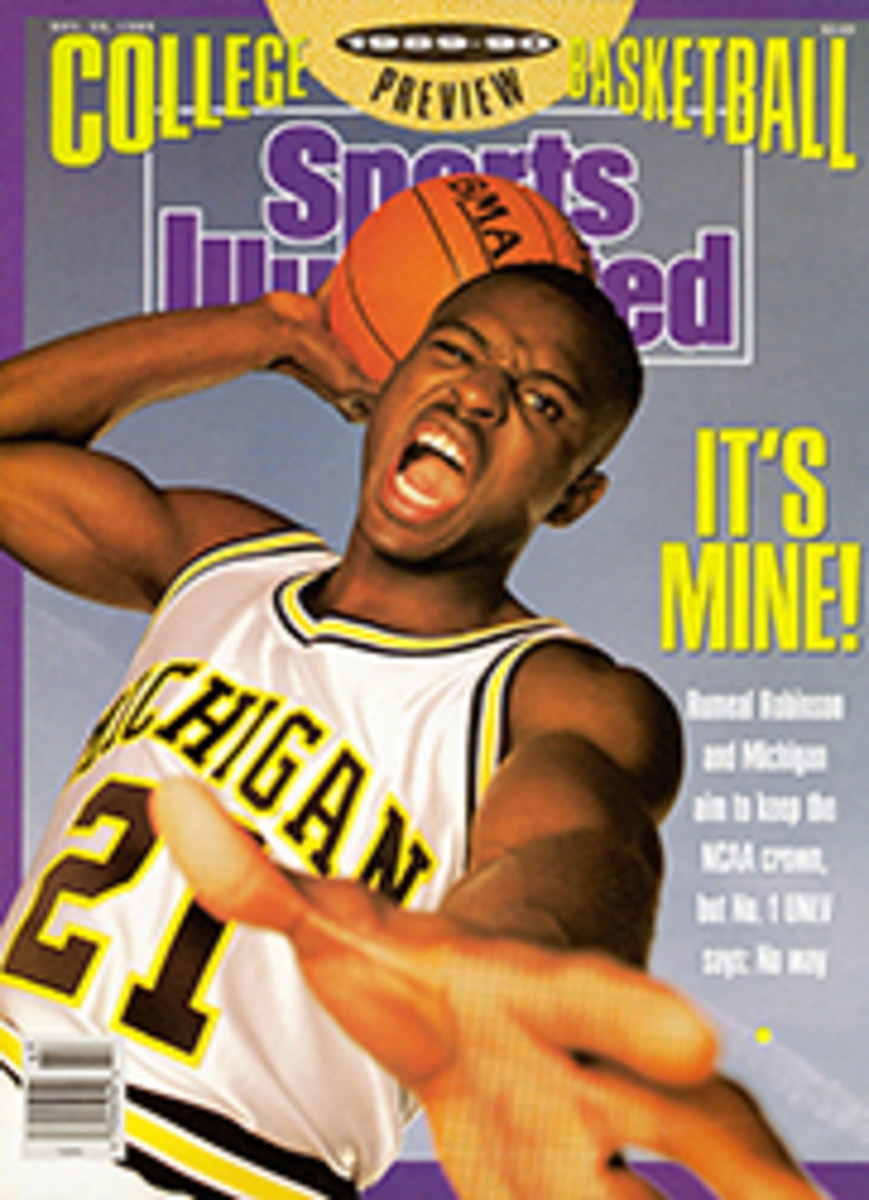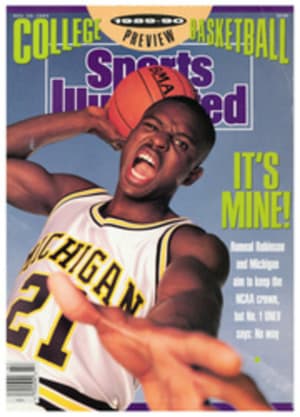
Letters
THE ALL-DECADE TEAM
During the summer the first thing I do upon receiving SI is read Peter Gammons's INSIDE BASEBALL. I was flabbergasted when I saw his pick for Shortstop of the Decade (Oct. 2). Ozzie Smith is among the best fielders in the game. He is also a good base stealer and exciting to watch. But if I were a general manager, I would rather have Cal Ripken Jr. Ripken has had eight straight seasons with 20 or more home runs, 80 or more RBIs, 80 or more runs scored and 25 or more doubles. As for fielding, Rip had only eight errors in 162 games this year; Smith booted 17. And Rip hasn't missed a game since early in the 1982 baseball season.
J. WILLIAM COOK IV
Shrewsbury, Pa.
Honorable mention is not good enough for Boston's Dwight Evans. His offensive and defensive feats and his consistency have been overshadowed only by his humanity and his integrity. I find it hard to displace any of the three outfielders named to this team, and I know how Gammons would feel about naming a DH (ouch!), but omitting Evans only underscores the fact that he has been the Most Underrated Player of the Decade.
JOHN C. MONAHAN
Monroe, La.
Why Gary Carter as Catcher of the Decade? He's a "me" player. Bob Boone would be a better choice. Also, how about splitting first base between Eddie Murray and Don Mattingly?
ROY IRLE
Anderson, Ind.
Ryne Sandberg over Willie Randolph at second? You must be joking.
CHRIS KLEM
Brick, N.J.
BIG-TIME SOLUTIONS (CONT.)
Rick Telander's article on big-time college football hit the nail on the head. But perhaps even more revealing was the reaction of Michigan coach Bo Schembechler to the article. He told The Capital Times of Madison, Wis., "Rick Telander is a loser. He's been a loser all his life." Nice response, Bo.
Here's a coach who, through the sweat and toil of young men who commit four or five years of their lives to football, has generated millions of dollars for his athletic department. Yet he won't even respond to the obvious flaws in the system. Schembechler may win games, but when it comes to dealing with the problems in the system, Bo knows hypocrisy.
CHRISTOPHER BLYTHE
Madison, Wis.
Indeed, something must be done to curb the exploitation of college athletes. However, I'm not sure Rick Telander is on the right track. He fails to provide the most telling statistic of all—the percentage of college athletes who make a living in the pros. It's pretty low—only 2.7% for basketball and 2.4% for football. His proposal for an Age Group Professional Football League would only encourage the pursuit of this improbable dream and leave many more exploited athletes without a college education. Let's remember that an academic scholarship is pretty good compensation for services rendered on the football field. The hypocrisy of college football is not the lack of payment but the lack of commitment to education on the university's part.
DAVID J. EVELD
Houston
That SI is willing to print articles like Telander's is the reason I have subscribed for the past 22 years. While I might not agree with all his solutions, he has obviously done his homework and can back up every one of his assertions. I have always maintained that it is ridiculous to call the gift of an education to a football player a scholarship. The athletes are rarely scholars, and they are not wooed by universities for their academic abilities. A scholarship is the waiving of tuition for someone who wants to pursue an education.
I suspect that this article will generate more heated response than any you have published in years, and well it should.
MICHAEL BROOKS
Laurel, Miss.
After reading Telander's essay, I reflected upon my experience as a student at Wake Forest in the early 1980s. When I was a freshman, the football players lived in a vintage-1950s dorm on the quad, as did most other students. Some of us even had freshman players and walk-ons as roommates. On the field, the Deacons played well but were generally overmatched. We cheered for them anyway, because many were our friends.
By the time I graduated, in 1983, athletes were ensconced in a palatial dorm complex behind the gym. They had mandatory drug tests for all players and mandatory study halls for freshmen and those players with poor grades. The implication was clear: They were there to play big-time football. It became normal to hear booing at games if the team did not live up to new, higher expectations.
Wake is the second-smallest school in Division I-A (Rice is the smallest) and has the second-worst alltime record among the 106 I-A schools (Kansas State has the worst). I wonder: Are all these changes worth an occasional 6-5 season?
BRYAN FICHTER
Laurel, Md.
Like thousands of others, I direct my contributions to the athletic department of the school I support. If that school had no big-time football or basketball, I wouldn't contribute. Even though my contributions are athletic-department directed, I am helping to keep the university from having to raise tuition and fees, because contributions to the athletic department keep it from draining general school funds. Besides, without big-time football and basketball, how would universities continue to operate nonrevenue sports?
WILLIAM S. EVANS
Nashville
Not all athletic directors of big-time programs hoard their profits. The LSU athletic department had such a profitable year in 1988-89 that AD Joe Dean donated $2 million to the university's general academic fund.
WILL MONTGOMERY
Atlanta
NOT ENOUGH P.E.
SCORECARD'S "Fat, Not Fit" editorial (Oct. 2) gave me fuel for a cause I am dealing with in my little part of America. In your item Wynn Updyke, dean of Indiana University's school of physical education and director of the study cited, says that our society's infatuation with fast foods and computer games contributes to the perpetuation of cream-puff males and marshmallow females. Let us look instead at our educational system.
My son, who is a first-grader, has had physical education three times in nine weeks of school. This is disgusting. I do not care if a first-grader has 100 recesses a day; recess is a supervised—not an instructional—activity. This state requires that public school students from kindergarten through the sixth grade receive instruction in eight programs. That is, unless excused for handicaps or religious beliefs, they must receive instruction in art, health, language arts (reading and writing), mathematics, music, physical education, science and social studies. The recommended instruction time for P.E. in the primary grades is 8% of the total instructional time, which in my son's day would be 28 minutes five times a week, or 46 minutes three times a week. P.E. three times in nine weeks isn't even in the ballpark.
SANDY TROWBRIDGE ROWAN
Klamath Falls, Ore.
DOUBLY TRAGIC
Bruce Newman's article (This Is for You, Sal, Oct. 9) was a great tribute to the late Colorado quarterback Sal Aunese and his teammates. The whole state of Colorado was touched by Aunese's courage and determination in his battle with cancer, and by the love the Buffaloes have shown him over the past six months.
SCOTT BOLITHO
Englewood, Colo.
It is always a tragedy when anyone as young as Sal Aunese loses his life. However, I cannot understand why the press insists on helping the Colorado football team make a martyr of a young man of questionable moral character. Aunese was arrested and convicted of a misdemeanor assault. He was the acknowledged father of the coach's illegitimate grandson. Aunese should be mourned. But his death should not automatically qualify him as a hero worthy of public admiration.
MIKE MAHONEY
Overland Park, Kans.
IN BLACK AND WHITE
This is a follow-up to your April 17 article (Dark Forces) on the question of whether black uniforms can make a team meaner and tougher. My softball team, representing Holy Trinity Greek Orthodox Church, wore black for many years. Although we were among the best teams in the league, we never won the championship. We were also the league's most-hated team, because we did more than our share of jawing. This year, however, we switched to white uniforms, and we went 24-1 and swept the championship series. We remained the most-hated team in the league, though.
GEORGE SEMERTSIDIS
Canton, Ohio
A MATTER OF HONOR
The same week I read Rick Telander's article on the lack of integrity in big-time college football (Something Must Be Done, Oct. 2), I read an editorial in The Chattanooga Times praising the football coach at Chattanooga's Red Bank High, Tom Weathers (below), for teaching his players a lesson in integrity. With his team leading Hixon High 40-0 at halftime, Weathers instructed his assistants to give everyone on the bench a chance to play in the second half. They did just that, and one of the players turned out to be academically ineligible, though neither the coaches nor the player knew it at the time. Although the incident might well have gone unnoticed, when Weathers realized what had occurred, he informed the Tennessee Secondary School Athletic Association, which ruled that Red Bank would have to forfeit its 40-11 victory. As the editorial concluded, "Coach Weathers taught his players, and the rest of the Red Bank student body, that some things are more important than winning and integrity is one of them." He who has ears to hear, let him hear.
JACK C. BISHOP JR., Pastor
Signal Mountain (Tenn.) Baptist Church
PHOTO
MICHAEL LOCKE
Letters to SPORTS ILLUSTRATED should include the name, address and home telephone number of the writer and should be addressed to The Editor, SPORTS ILLUSTRATED, Time & Life Building, Rockefeller Center, New York, N.Y. 10020-1393.

